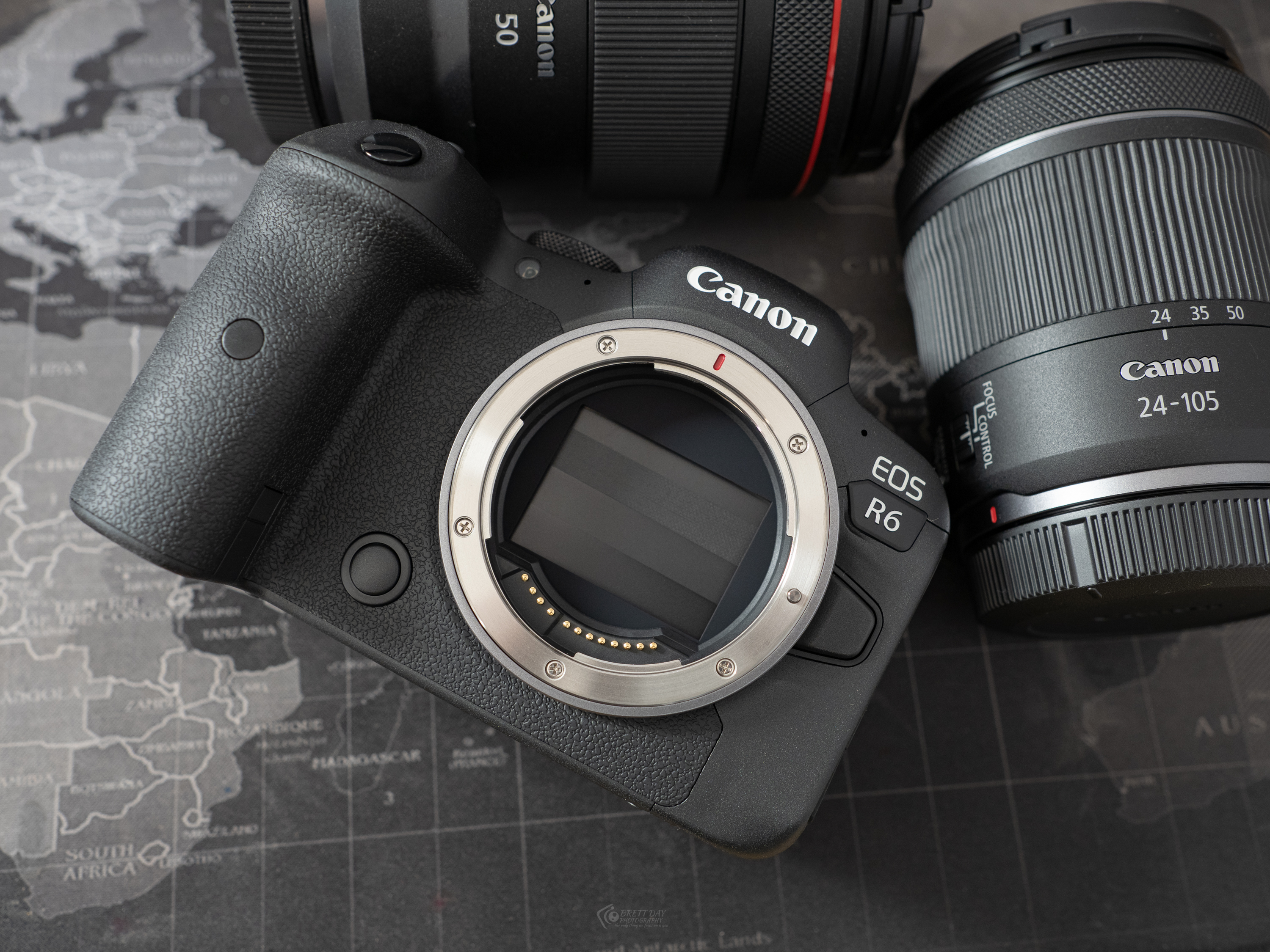Last Updated on 12/15/2021 by Hillary Grigonis
The Canon EOS R6 attempts to reclaim the workhorse camera throne from Sony, and it has more than a fighting chance of winning.
The Canon EOS R6 has been living in the shadow of its bigger brother, the EOS R5, ever since the two cameras were announced earlier this year. Aimed at working professionals, the Canon EOS R6 seems to be slightly underweight compared to its main rivals. Still, this camera, which is powered by the same 20.1MP sensor and DIGIC X processor found in the 1DX III, has a lot of fight in it. Does the EOS R6 have enough about it to make the Sony a7 III, the Nikon Z6, and the Panasonic S1 throw in the towel? Find out in our full review.
Editor’s Note: Canon has recently updated this camera with firmware 1.5, which includes vechicle detection autofocus. The update also improves face detection for people wearing helmets and goggles, as well as some more minor tweaks and bug improvements. We downloaded the latest firmware and updated our autofocus section accordingly on Dec. 15, 2021.
Table of Contents
Pros and Cons
Pros
- Fantastic ergonomics have returned to Canon cameras
- Great build quality which includes excellent weather sealing
- Incredible autofocus system that’s on par with Sony offerings, now with vechicle detection AF
- Plenty of 4K video options for those need them
- Easy to use touchscreen menu system
- Excellent image quality
- Incredibly effective IBIS
- Two UHS-II SD card slots
- Incredible buffer performance (over 180 RAW and over 1,300 JPEGS)
- The EVF and vari-angle LCD are of high quality
Cons
- No top LCD panel
- It’s priced a little high at $2,499
Gear Used
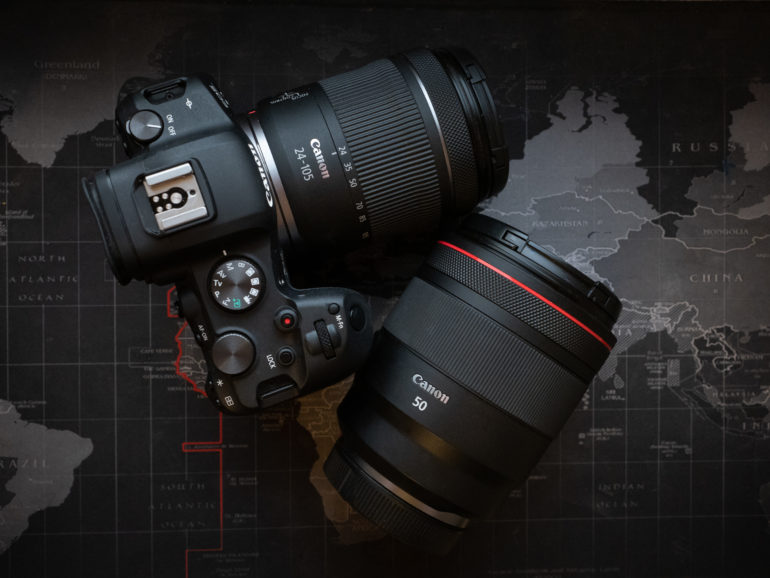
We used the Canon EOS R6 with the following lenses:
Tech Specs
All of the technical specifications have been taken directly from the official Canon website.
- Recording Media: Two SD card slots compatible with UHS-II
- Lens Mount: Canon RF mount
- Image Sensor: CMOS sensor 20.1MP, Low Pass filter installed in front of the image sensor
- Image Formats: JPEG, HEIF, RAW / C-RAW (CR3), C-RAW (Canon original); Movies: ALL-I (Time-lapse video only), IPB, MP45
- Viewfinder: OLED color electronic viewfinder with approx 100% coverage vertically and horizontally
- LCD: 3-inch vari-angle touchscreen TFT color, liquid-crystal monitor with 1.62 million dots
- Autofocus: Dual Pixel CMOS AF, 6072 selectable positions for stills, 4968 positions for video. Head and eye-detection and animal tracking
- IBIS: In-body Image Stabilizer can provide up to 8 stops of Shake Correction
- Focusing Brightness and AF Range: EV -6.5 to 20 for stills with f1.2 lens, EV -5 to 20 for video with f1.2 lens.
- Shutter: Electronic and mechanical, 1/8000 max shutter speed. 12 frames per second mechanical, 20 frames per second electronic.
- Operating Environment: 32-104° F / 0-+40° C, 85% humidity or less
- Dimensions: Approx. 5.45 x 3.84 x 3.48 in. / 138 x 97.5 x 88.4mm
- Weight: Approx. 1.5 lbs. / 680g (including battery, SD memory card; without body cap). Approx. 1.3 lbs. / 598g (body only; without battery, card or body cap)
- Battery: Canon LP-E6NH battery pack (also compatible with LP-E6N and LP-E6 battery packs)
- Interface: USB 3.1 Gen 1, HDMI micro out Type D, 3.5mm diameter stereo mini-jack for microphone, headphone jack compatible with 3.5mm diameter stereo mini-plug
I would say this is the first time I have been reminded of just how great previous 6D and even some 5D camera felt in hand via a Canon Mirrorless camera. Yes, the Canon EOS R6 feels that good.
Ergonomics
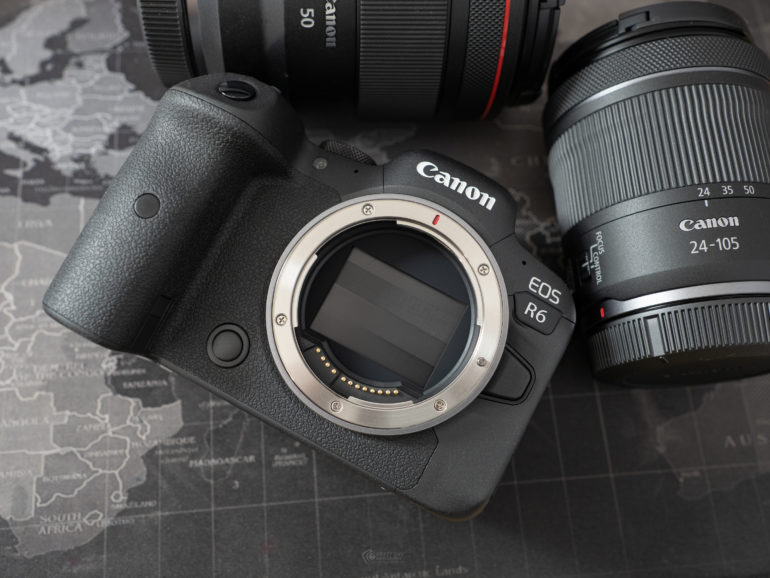
The Canon EOS R6 is unmistakably a Canon camera, and this is no bad thing. I have been a massive fan of Canon’s ergonomics for many years, and nothing about the R6 has changed my mind. I would say this is the first time I have been reminded of just how great previous 6D and even some 5D camera felt in hand via a Canon Mirrorless camera. Yes, the Canon EOS R6 feels that good. In the image above, you can see the deeply recessed grip, one assignable function button, and the lens release.
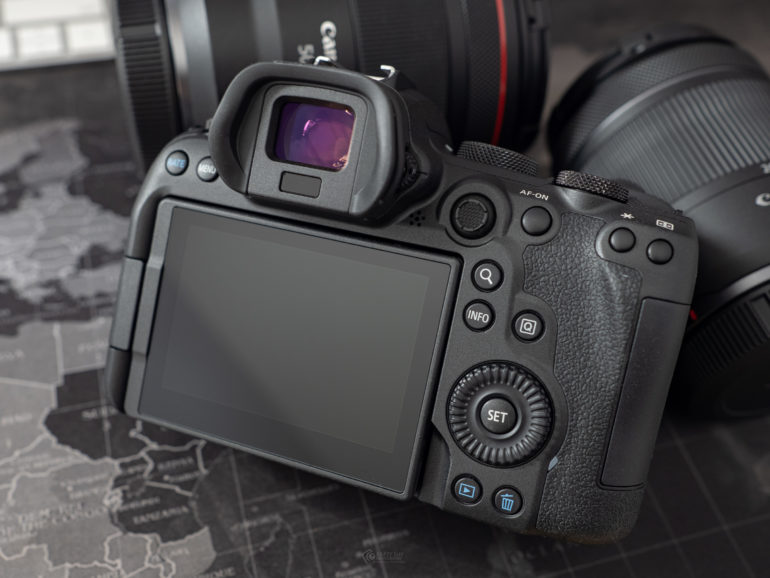
Around the back of the Canon EOS R6, you can see the camera is dominated by the 3-inch vari-angle touchscreen. Flanking the screen are the jog dial, which controls your aperture settings, the set key, playback and delete buttons, the quick menu button, an info button, and the magnify control. Further up towards the EVF, you’ll see the joystick (a welcome replacement to the touch bar found on the EOS R), your AF-ON control, and the focus mode button also located here. On the left-hand side of the EVF, you’ll find a dedicated button to rate your images and the primary menu key.
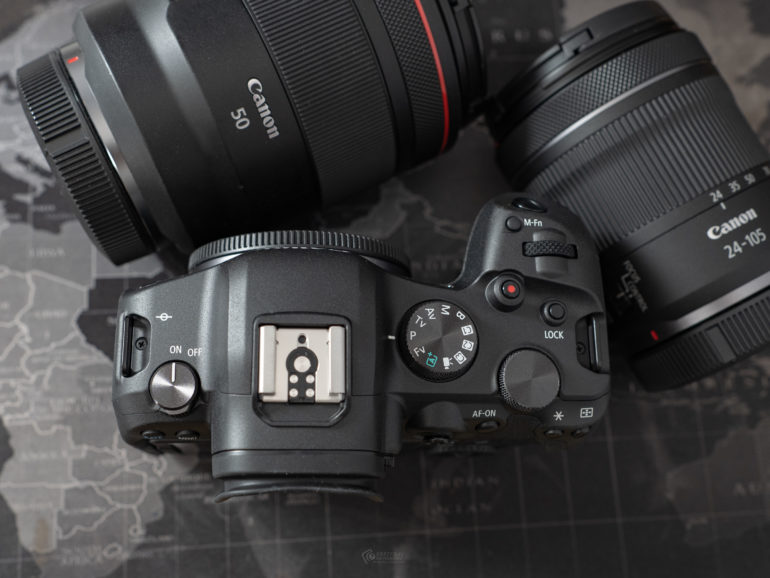
The top of the Canon EOS R6 is much more reminiscent of the EOS RP. You can see there is no top LCD, but there is a mode dial, which is easy to use and well placed. To the right of the mode dial you’ll find the record button, lock control, the shutter speed dial that sits at the top of the grip, a function button, and a dedicated dial for ISO control towards the back of the camera. On the left-hand side is the on/off dial.
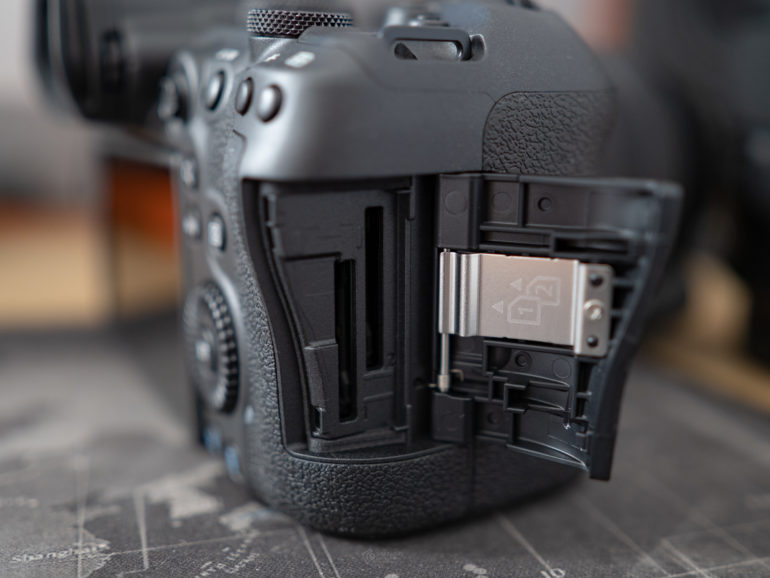
The right-hand side of the Canon EOS R6 houses the dual UHS-II card slots. This, in itself, is a fantastic addition to this camera. Aside from the card slots, there is nothing else going on on the right of the camera.
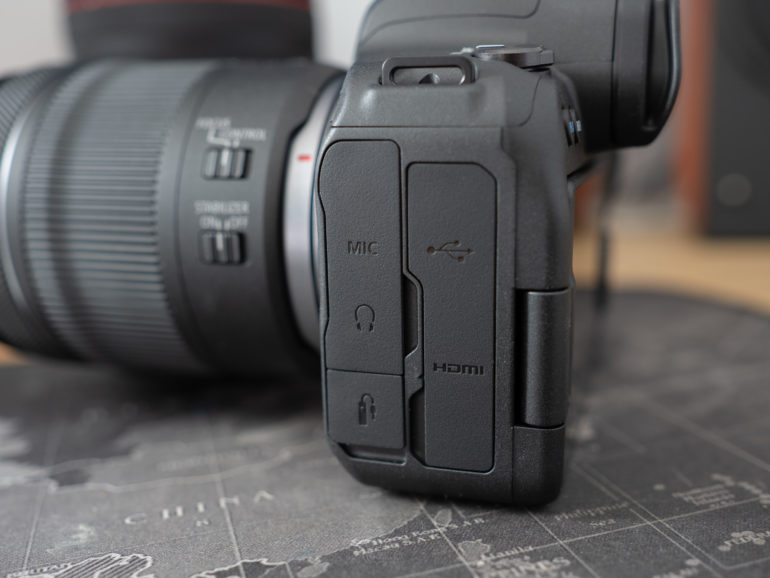
The left-hand side of the Canon EOS R6 houses all of the connectivity options. Here you will find a Micro-HDMI connection, a USB-C connector, both mic and headphone jacks of the 3.5mm variety, and a cable release connector.
While it might not look like a massive departure from the EOS R and RP, there are enough subtle changes to the design of the camera that will remind you of past EOS 6D cameras: it’s just lighter than those DSLRs. If there was one complaint, it would be that the jog dial sits a little too far to the right, and because of this, you find yourself having to contort your hand and thumb into a slightly uncomfortable position when you want to use it. However, having said that, the Canon EOS R6 is excellent ergonomically.
“The shutter in the Canon EOS R6 is rated for 300,000 actuations, which definitely puts it into professional usage territory.”
Brett Day – Gear Editor
Build Quality
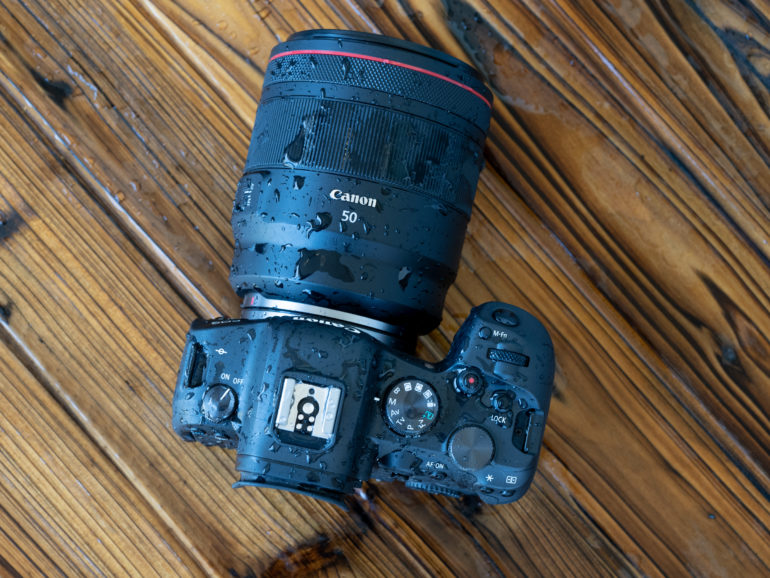
The Canon EOS R6 offers precisely what you would expect from a Canon 6D-like camera when it comes to build quality. While it’s not as robust as the R5, the Canon EOS R6 is still sturdy and well-built, and it will be able to survive what the average working photographer throws its way.
The magnesium alloy body is covered in a nicely textured material that has a soft yet grippy feel. All the buttons and dials feel fantastic, and they all provide excellent positive feedback when pushed or turned. The cover, which flips down over the sensor when the camera is off, is a brilliant feature, and it makes changing lenses out in the field a little less daunting.
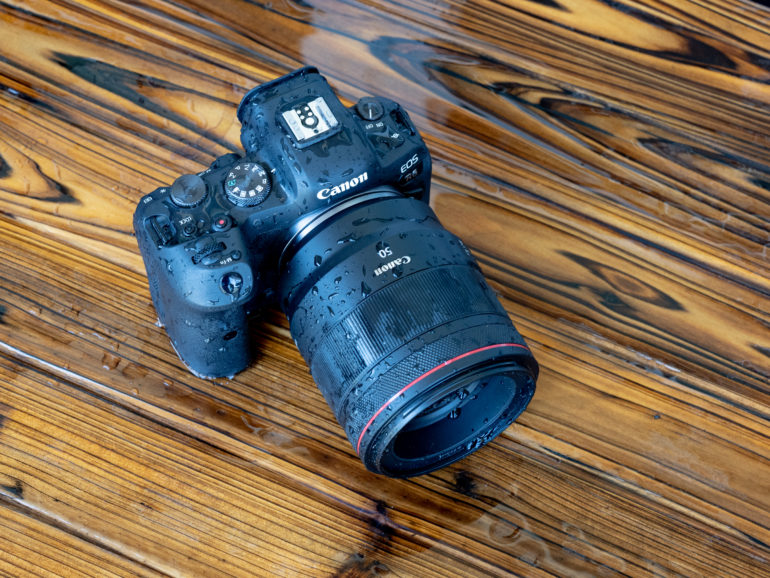
I have used the Canon EOS R6 in some pretty harsh conditions with blowing dust and dirt, and a brief rain shower, and the camera just kept on chugging along. I wouldn’t say you could use it all day in the rain like you could the EOS R5 or the tank-like Canon 1DX III, but it has enough sealing to protect you for a while.
The shutter in the Canon EOS R6 is rated for 300,000 actuations, which definitely puts it into professional usage territory. For comparison sake, the Canon EOS RP has a shutter rating of 100,000 actuations and the Canon EOS R has a rating of 200,000, so this is a significant increase for the R6.
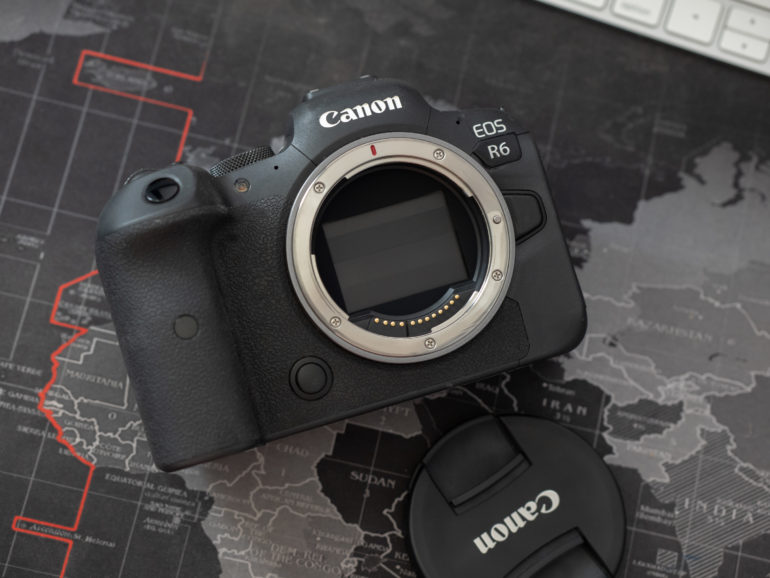
I haven’t been easy on this camera since I have had it in my possession, and it has stood up to everything I have asked it to do. From a build quality perspective, you have absolutely nothing to worry about with the Canon EOS R6; it’s solid.
“The in-body image stabilization in the Canon EOS R6 is very impressive, and it makes using this camera incredibly easy, especially in low light situations.”
Brett Day – Gear Editor
Ease of Use
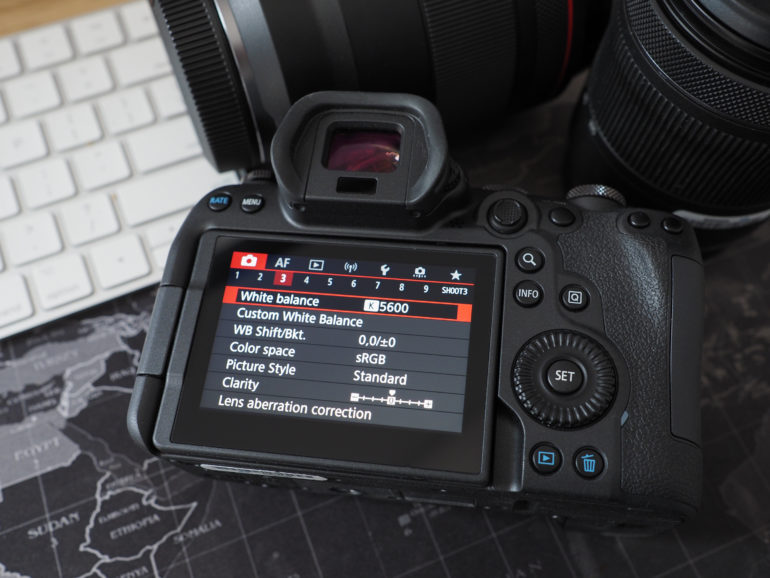
The Canon EOS R6 is about as easy to use as you can expect from modern Mirrorless cameras. One thing Canon continues to get right is the menu system. The well-designed menu system makes the R6 very easy to use. Touch screen control implementation is as good as ever, and you’ll find yourself sweeping, swiping, and pushing your way through options with the touchscreen in no time. If you prefer a more traditional approach, using the physical controls to navigate the menus are easy to use as well. And the Q menu is fantastic as it gives quick access to the most commonly adjusted parameters within the camera. The ergonomics and button placement make this camera a delight to use. I am so pleased Canon decided to give separate physical wheels for ISO, shutter, and aperture control. It makes the R6 very intuitive.
The 3.69 million dot EVF on the Canon EOS R6 is quite nice. Place your eye up to it, and you will be treated to a crisp, clear image. You also have the option to switch between 60fps and 120fps refresh rates. There is a notable difference between the two settings with 60fps being a little jarring at times. If you plan on capturing any fast-moving objects, or if you pan a lot, you will become frustrated, so you may find yourself using the 120fps mode frequently. The 1.62 million dot LCD is also of high quality, and it displays sharp images. The LCD on the Canon EOS R6 is vari-angle, which means it fully rotates. This is great for those who will use the R6 for videography, though I also find it a treat to use for photography too.
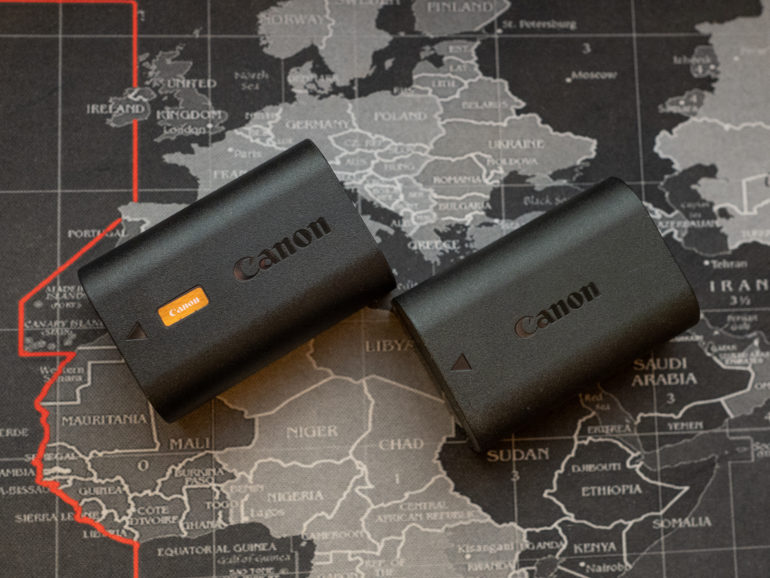
The CIPA rating for battery life is 510 shots using the LCD, and 380 shots using the EVF. In real-life use, the number of images you can capture will far exceed these estimates. During a day of regular shooting and shooting in bursts, I was able to fire off nearly 2,300 shots before the battery symbol was flashing. Even during general use, with a lot of playback, my numbers were significantly higher than the CIPA rated ones when using the new Canon LP-E6NH battery. Your mileage will vary based on how you use the camera, but just know that you should easily be able to go whole day shooting with one battery. It’s also worth noting that the EOS R6 is backward compatible with older LP-E6N and LP-E6 batteries.
The Canon EOS R6 can fire off 12 frames per second with the mechanical shutter, and 20 frames per second with the electronic shutter. These burst rates make it easy to use the camera for sports or any other fast-paced activities. The two UHS-II card slots are more than fast enough for photographers to spray and pray without having to worry about filling up the buffer. I was able to shoot 184 RAW files before the buffer filled. When it comes to JPEGS, well, I got bored after holding the shutter long enough to rattle off 1,312 shots. Even after that, there was no sign of the camera slowing down. The electronic shutter does introduce some shutter roll when panning, but so do all other digital cameras.
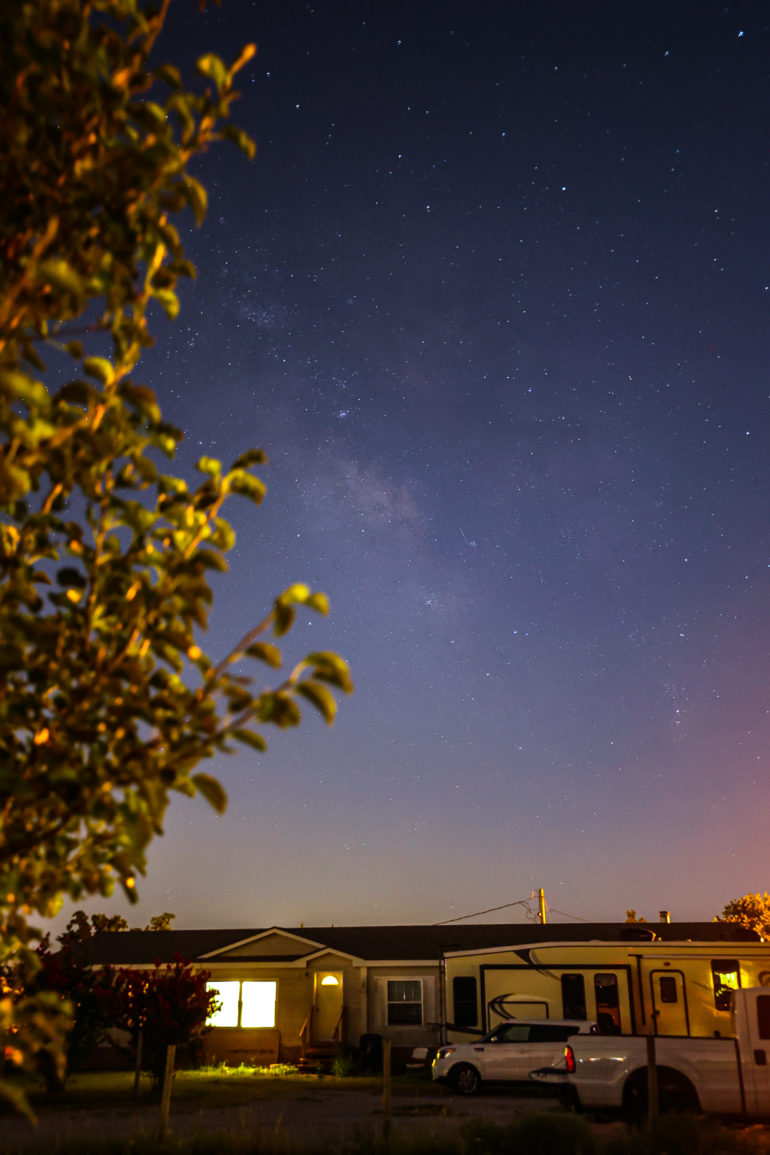
The in-body image stabilization in the Canon EOS R6 is very impressive, and it makes using this camera incredibly easy, especially in low light situations. Canon’s IBIS systems work differently depending on the lens you use. Each lens gives varying degrees of stops, which can be as high as eight stops. I used the 15-35mm f2.8 L IS USM and was able to handhold the camera for six seconds. This enabled me to get astrophotography shots handheld. The RF 24-105mm f4-7.1 was a great performer too, when paired with the R6. I was able to handhold this lens for around four seconds. You have to apply new firmware to the lenses for them to work with the IBIS in the R6, so just keep that in mind. Again, your results will vary depending on your own techniques.
Overall the Canon EOS R6 is a straightforward camera to use. Anyone familiar with Canon cameras will feel right at home with the EOS R6, and those who are coming to this camera from another platform will find that the learning curve is very easy.
“This is one of the best autofocusing systems I have used. My keeper rates, even in challenging conditions, have never been higher.”
Brett Day – Gear Editor
Autofocus
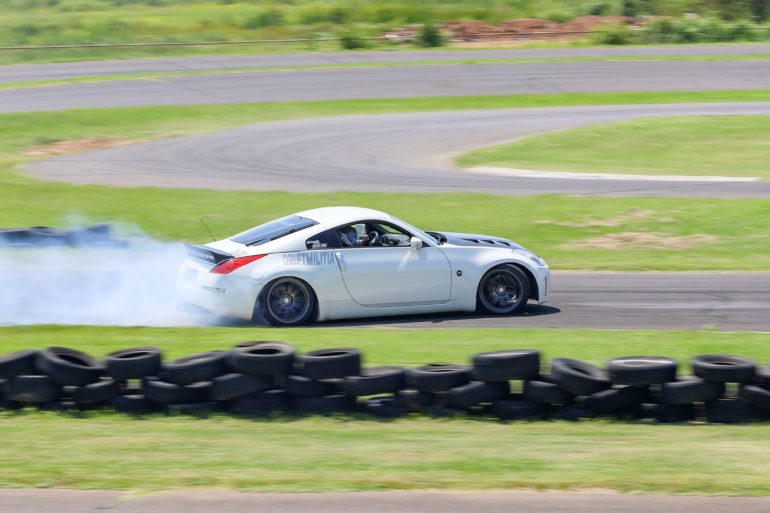
The autofocus system in the Canon EOS R6 is nothing short of extraordinary. It’s hard to believe just how far Canon has come since the EOS R. The new Dual Pixel Autofocus II system is easily on par with offerings from Sony cameras, and in some cases, it beats what Sony can do. There are 6,072 selectable positions for stills, 4,968 focus points for video, and 1,053 zones that the AF system can choose from. This is one of the best autofocusing systems I have used. My keeper rates, even in challenging conditions, have never been higher. The AF works equally as well in low light as it does in good light too. Let’s break things down a little further.
Animal Eye AF
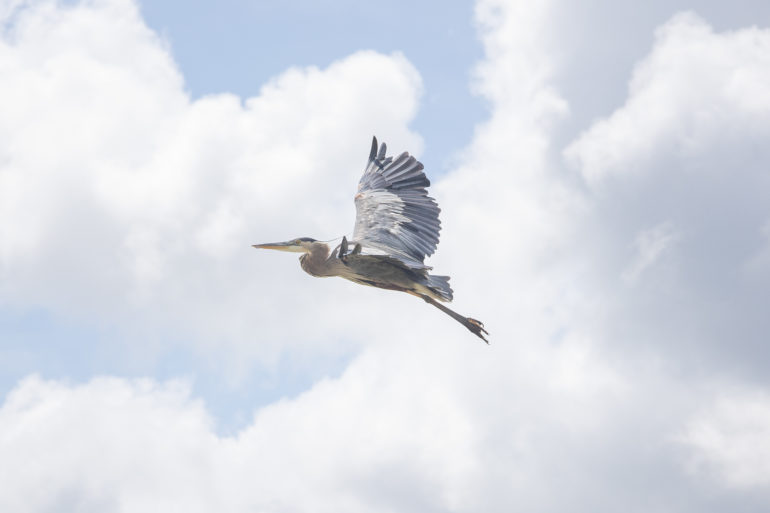
Canon has pulled an ace out of its sleeve when it comes to animal eye AF. I have been blown away with just how accurate and precise it has been. The eye AF starts almost instantaneously if you are close enough to an animal, and it does not matter if the animal is stationary or in motion. The Canon EOS R6 has no problems with birds in flight either, check out the image above. This Egret took off and soared past: in an instant, the camera was locked on and was tracking the bird’s eye as it flew by. I have tried the system out with my dogs too while they have been playing, and it’s the same great story.
The only negative I have to mention is that if you are in a situation where you have multiple animals around, the camera will lock on to one, but it can be challenging to make the camera change to, and track a different bird, dog, cat, or whatever you happen to be aiming at. You can manually move the cursor to the animal you want to follow, but this can make you miss some shots. However, if you’re a wildlife photographer or a birder and you plan on using this camera with the new RF 100-500mm f4.5-7.1, or the new RF 600mm and RF 800mm f11 primes, then you are in for a treat.
Human Eye AF

Canon’s eye AF is now on par with Sony’s implementation. The above image was captured with the RF 50mm f1.2, and as you can see, the eye is tack sharp. My son was moving, turning his head, and hiding his face behind his hands, and so on. As soon as his eyes were visible, the EOS R6 locked on instantly. I was also able to get the R6 to lock onto his eyes at a far greater distance than I have been able to with other cameras as well. Eye AF in the R6 is incredibly accurate and is very fast. It gets two thumbs up.
Tracking
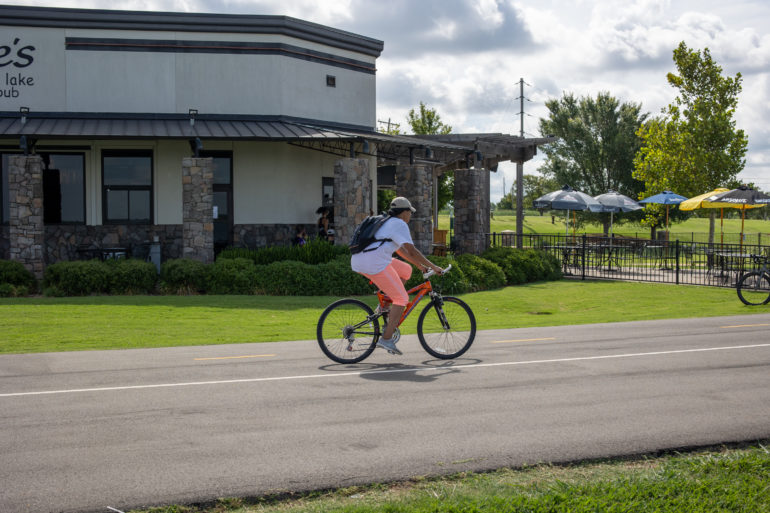
Tracking with the Canon EOS R6 is a piece of cake. Simply select servo mode and tracking, and you’re off to the races. I have used the EOS R6 to track racers drift cars around a race track, I’ve tracked motocross riders zooming around a dirt track, I’ve followed birds in flight, dogs running around, cyclists riding through a park and so many more things, and in every case, the Canon EOS R6 has not let me down. It does not matter if your subject is moving toward or away from you. It just works. My keeper rate has been in the high 90% range, and I couldn’t be happier with the levels of performance.
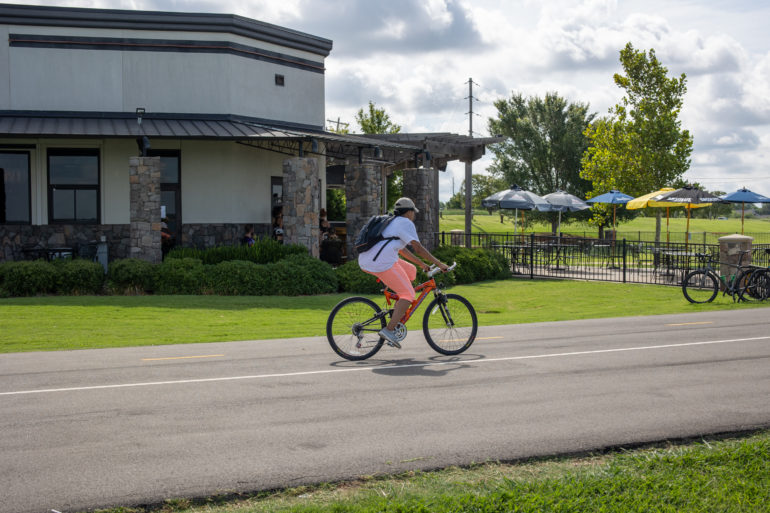
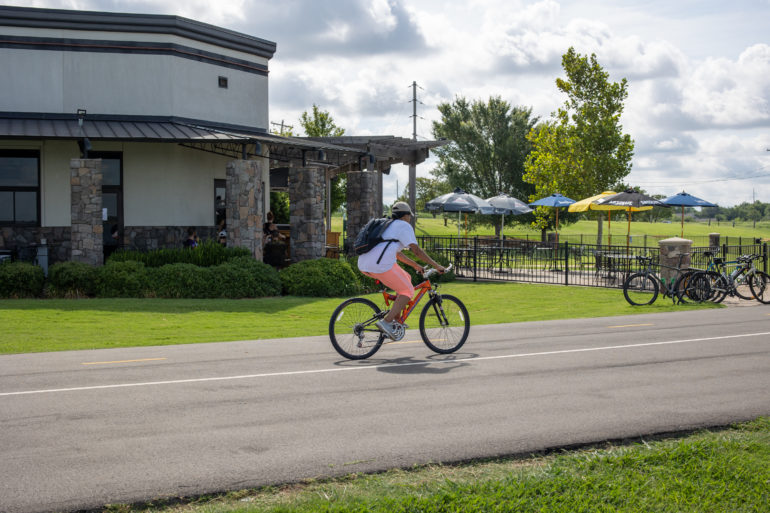


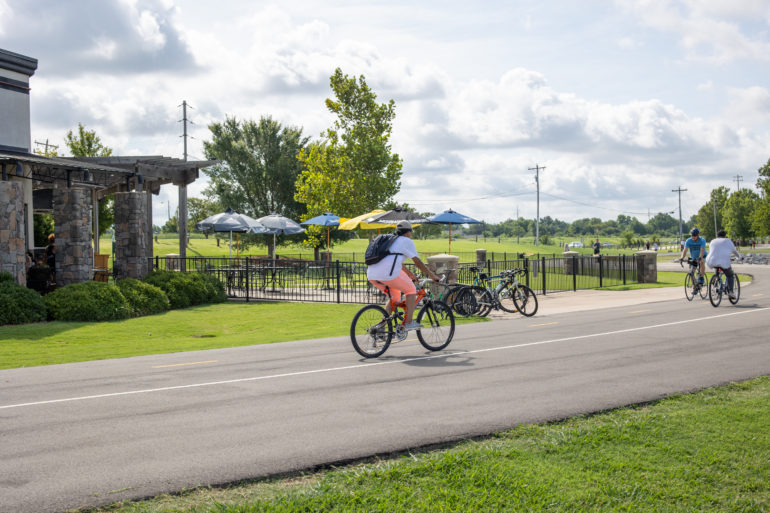
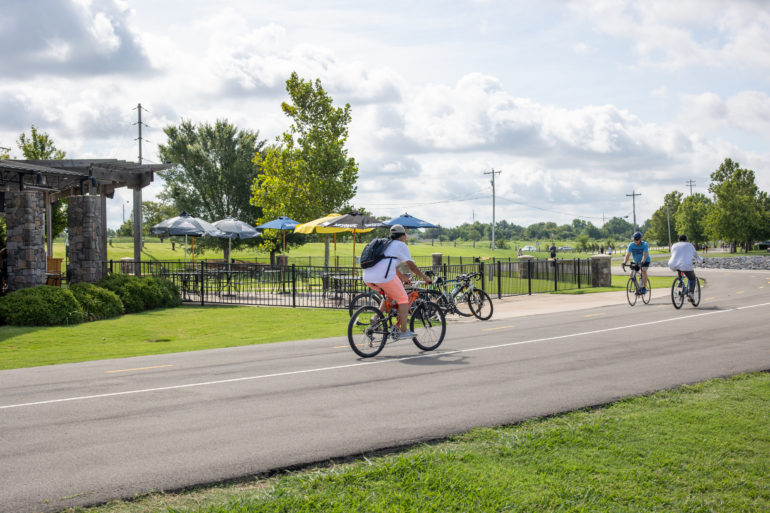
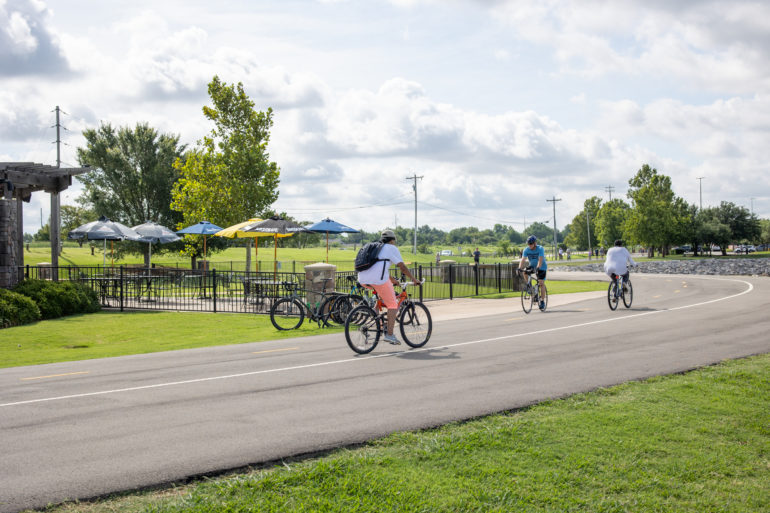

The sequence above shows nine images out of a burst of 20. The cyclist was tracked perfectly, and all images in this sequence are all in focus. At the end of the day, the results I achieved with the Canon EOS R6 were consistent and repeatable. If you photograph action, you will have no problems with this camera.
New! Vechicle detection autofocus
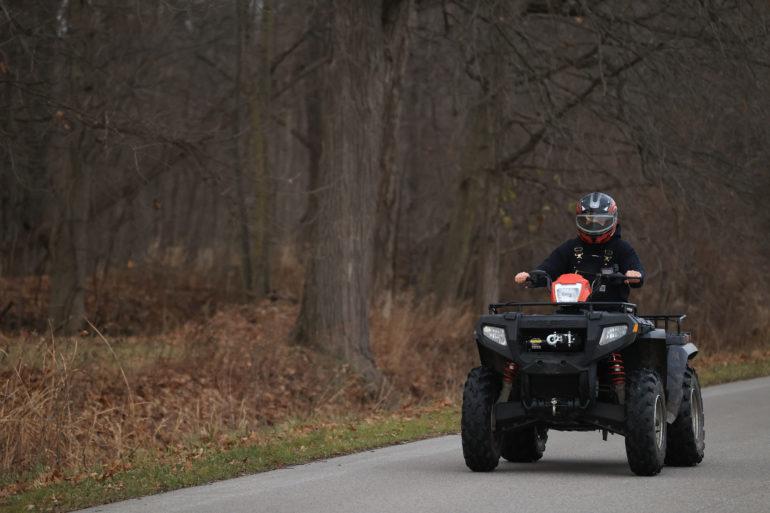
With firmware update 1.5, Canon has added vehicles to the subjects that the R6 is capable of detecting. After updating the firmware, this option is listed in the AF menu. The camera can also enable spot detection in this menu, which tells the camera to focus on the driver, rather than the car. Canon says this feature is designed to work on motorsports such as race cars and dirt bikes more than a mini van going down the road (though it can work in that instance sometimes). The same firmware update also improves human AF when the subject is wearing a helmet. Similarly, eye detection gets a boost when partially blocked by hair.
To test both the vehicle detection and the improvements to people wearing helmets, I photographed an ATV rider wearing a full-coverage helmet with a face shield. The rider was driving at full speed heading directly towards the camera (or as close to heading straight as the camera as possible while still being safe). When the rider was too far away and the face didn’t take up enough of the frame, the R6 easily found the ATV and locked on. It quickly jumped up to the face and stayed locked there. In fact, I didn’t get a single soft shot until the ATV came too close for the 70-200mm f4 lens. It even locked on when the helmet was at the edge of the frame and half cut off.
The vehicle detection and ability to still detect humans in a full helmet was impressive, even with the performance of the new R3 fresh on my mind. I much prefer the R3’s ability to detect and track subjects from any AF area mode. That makes it easy to move the autofocus point around when you switch subjects or if there’s more than one subject to detect. The R3 can also switch the type of subject to detect in the quick menu. The R6, unfortunately, requires digging into the full menu. But, while the user interface isn’t quite as good as the R3, R6 users will be very pleased with the performance of the latest Canon R6 firmware update.
“The dynamic range performance in this camera represents a substantial leap forward for Canon.”
Brett Day – Gear Editor
Image Quality
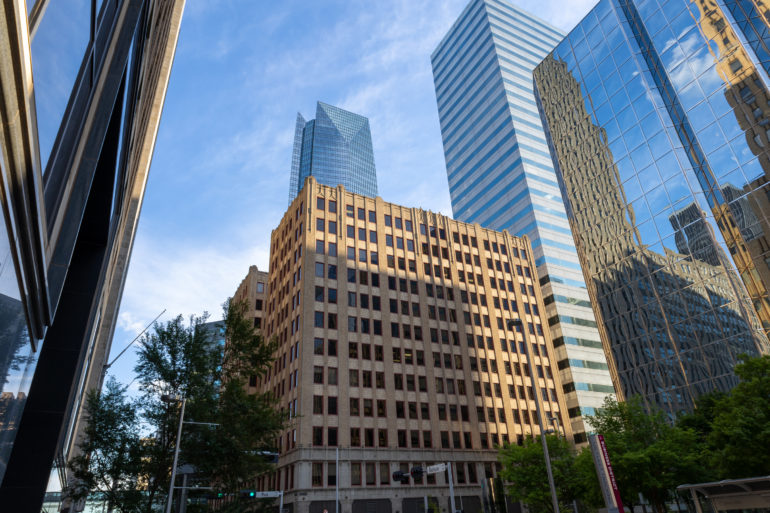
I know many photographers out there have lamented Canon’s decision to go with a 20MP sensor in the EOS R6, but I can tell you that you have nothing to worry about. Yes, the 20MP sensor in this camera has fewer megapixels than its rivals, and it even has fewer pixels than the EOS R and RP, but in real-world use, I can hardly tell the difference between files from the 30.3MP EOS R and the 20.1MP EOS R6. The images from the R6 have gorgeous colors, there’s plenty of detail in the pictures for almost all but the hardiest of pixel peepers, dynamic range is excellent, and high ISO performance is exceptional.
RAW File Versatility
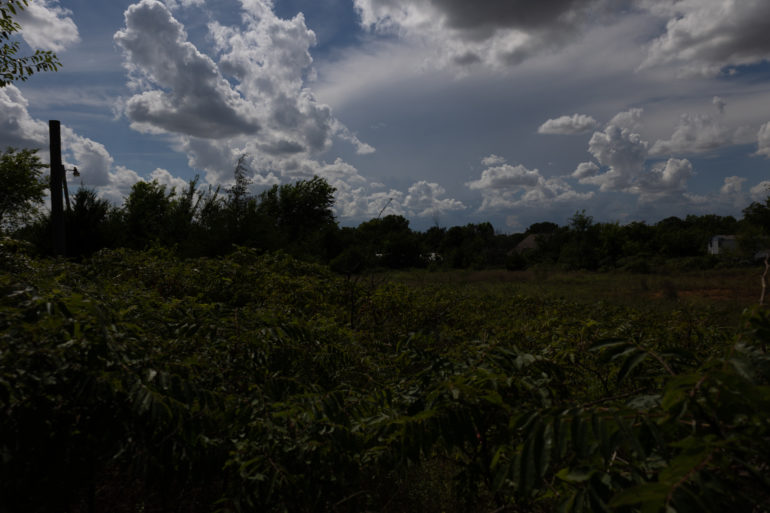
We processed the RAWs in two different ways: The first way was by converting the CR3 files into DNG via the Adobe RAW 12.4 Beta Converter. The second way was a test using Adobe Lightroom and Photoshop with official support for the files. We’ll update this review when Capture One offers support too.
Levels of dynamic range from Canon’s cameras have never been up there with the best, but things have changed with the Canon EOS R6. While the sensor in the R6 doesn’t perform as well as Sony sensors, it more than holds its own. I have been quite impressed with the amount of detail I have been able to pull out of the shadows, and I have been equally impressed with the detail that can be clawed back from highlights as well. Let’s take a look at some samples.
In the first image above, I purposefully underexposed the scene to test shadow recovery. The bottom image shows the same scene after the RAW file has been processed. The amount of detail that has been drawn out of the shadows is impressive. While you might not be able to see it here, the details in the leaves on the back row of trees is excellent.
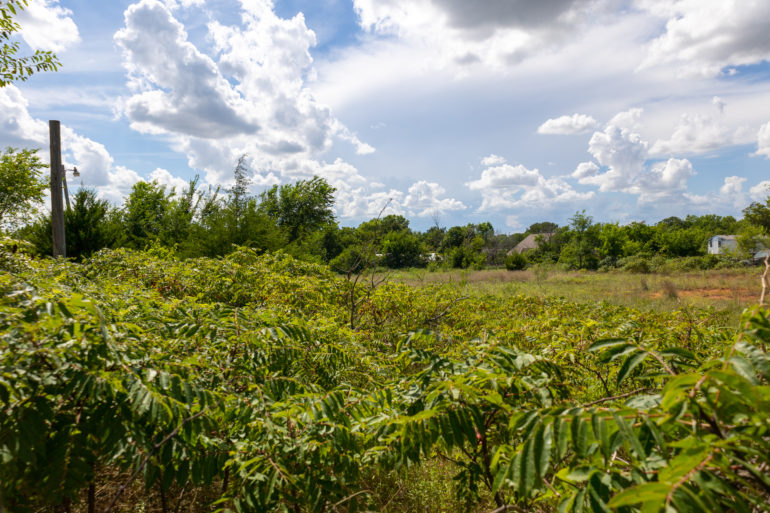
The image below is one that I overexposed so that I could test highlight recovery.
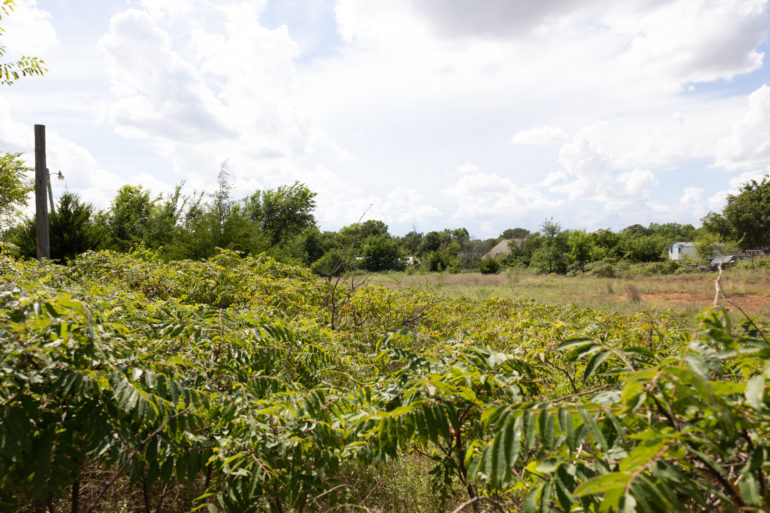
Below is the same image after being processed. As you can see, I have been able to bring back a lot of details from the overexposed highlights.
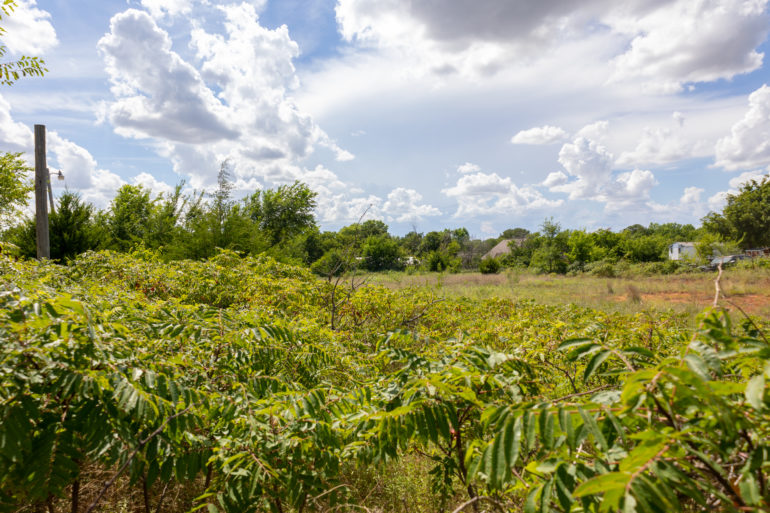
You’re not going to have any issues when it comes to dynamic range. Canon has done a great job with this new 20MP sensor. The dynamic range performance in this camera represents a substantial leap forward for Canon.
JPEG Quality

Out of camera JPEGS are excellent from the Canon EOS R6. The JPEGS showcase the Canon colors we have always known and loved. Noise reduction in the camera isn’t excessive, and details in the highlights and shadows are controlled nicely. The JPEGS have been more than good enough to use immediately on all occasions.
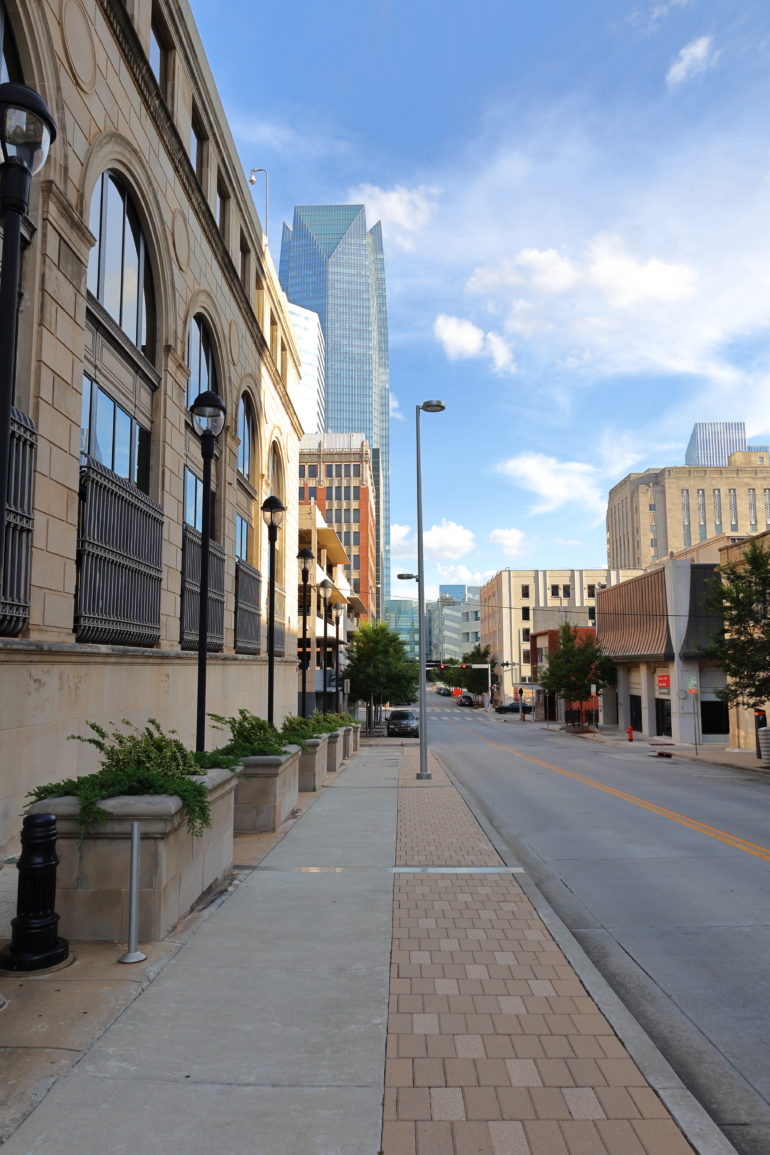

High ISO Performance
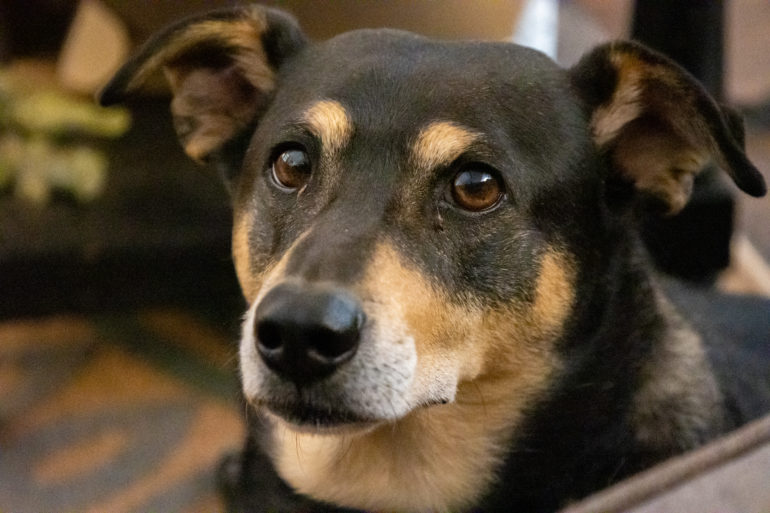
Staggering is a word I would use to describe the low light performance of the Canon EOS R6. IS0 6400 is nothing to this camera, it continues to laugh at ISO 10,000, and even 25,600 produces images that can easily be used. At the highest of ISO settings, there’s some color noise, as you would expect, but wow, it’s impressive. The lower megapixel sensor really gives the EOS R6 an advantage over other cameras when it comes to low light performance.
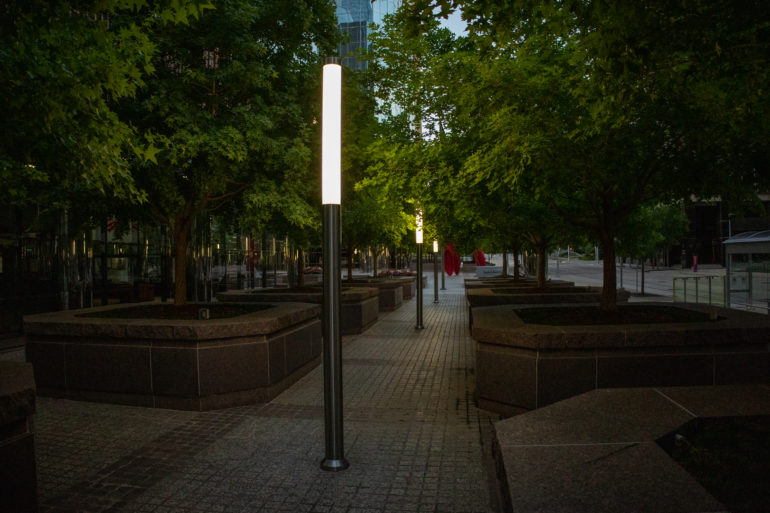
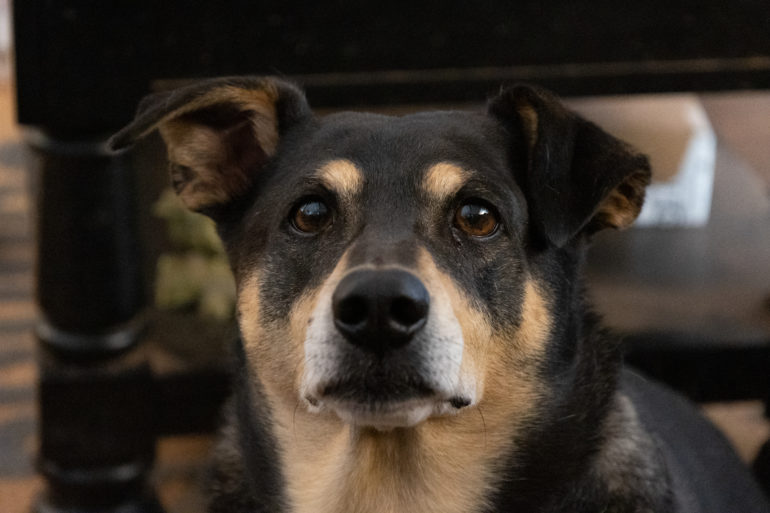


Extra Image Samples
Below you will find a mixture of unedited and edited RAW files converted to JPEG, and straight out of camera JPEG files so that you can get a better understanding of what to expect from this camera. Each has been marked accordingly.
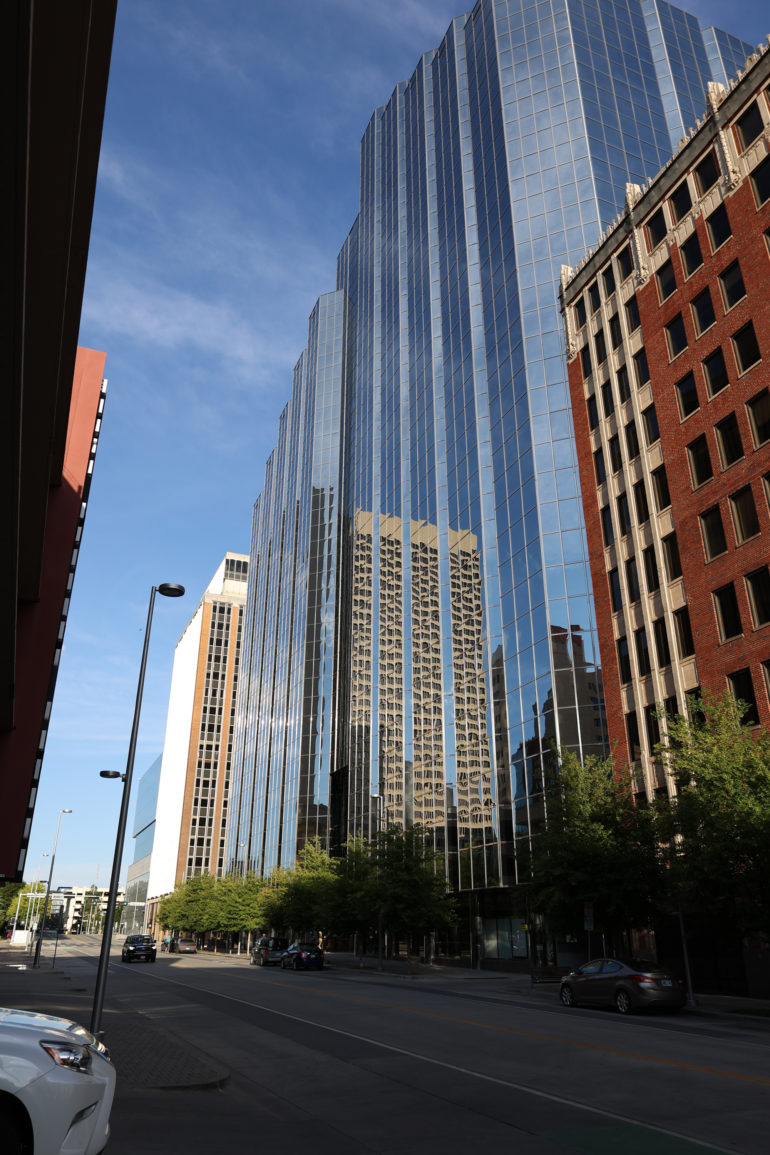





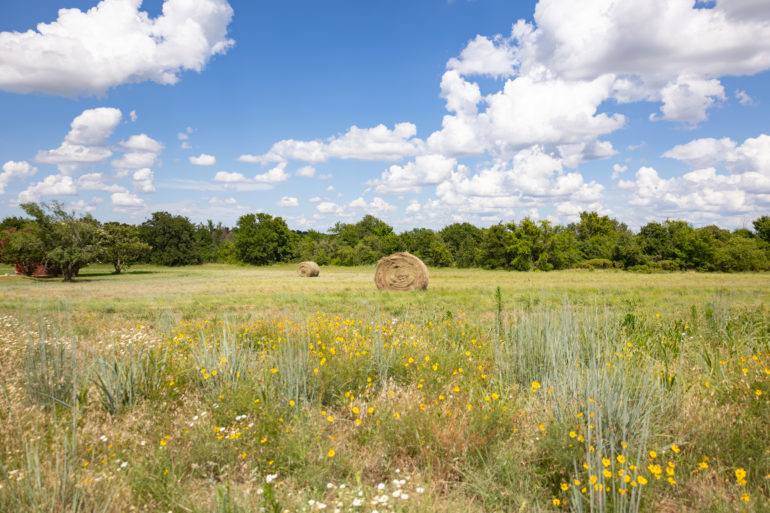
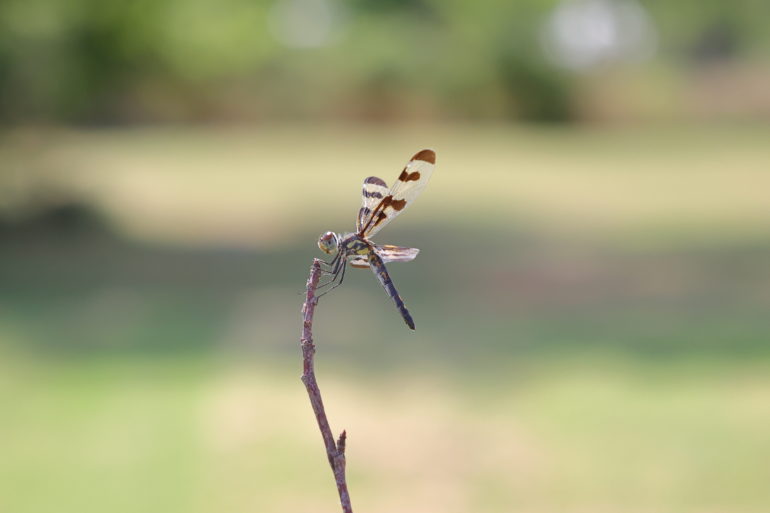
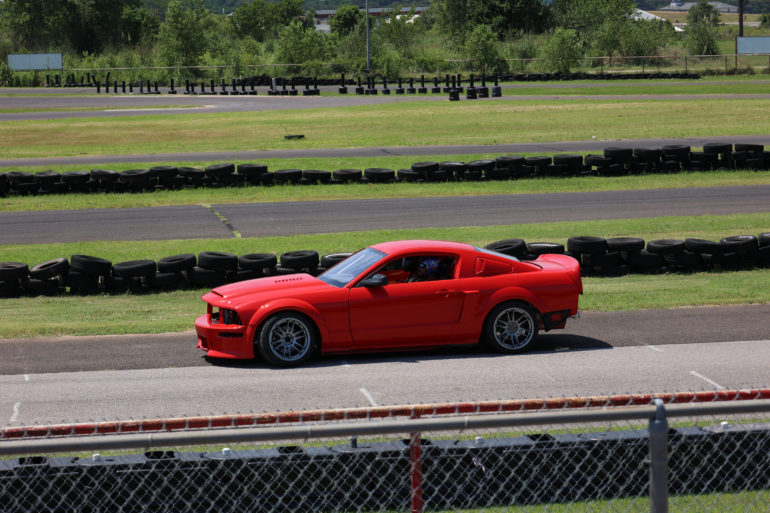
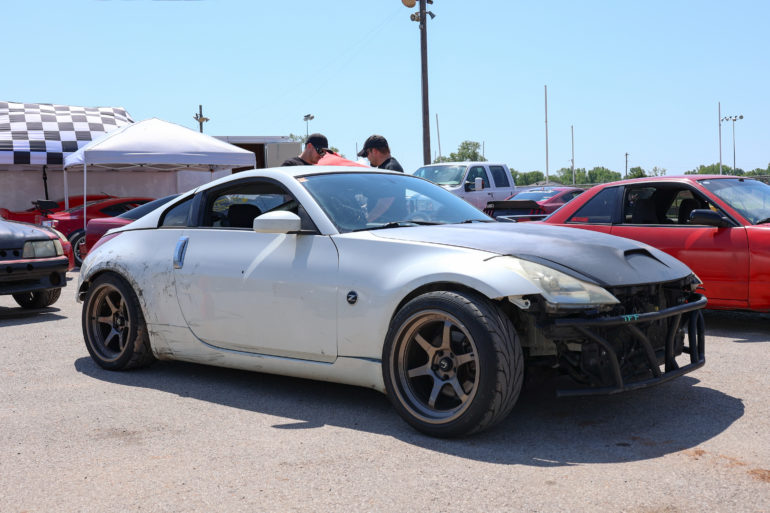

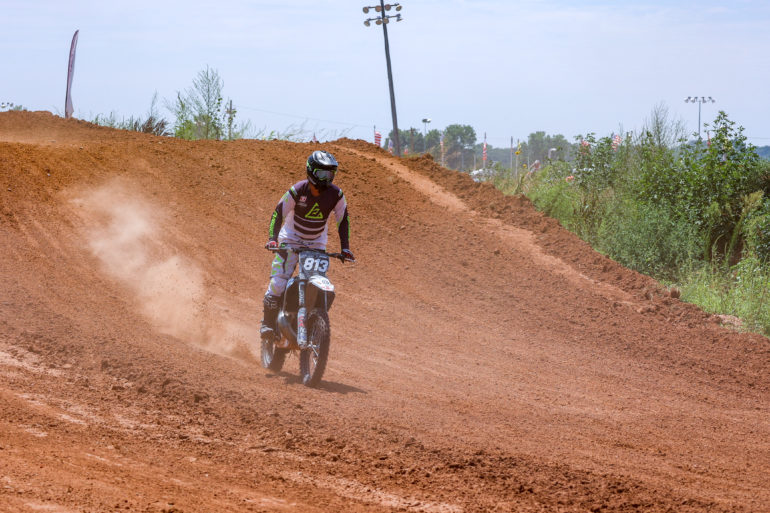
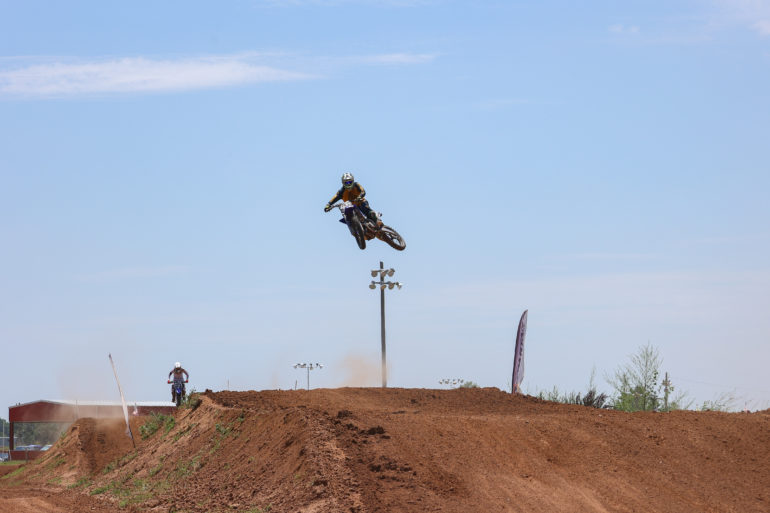
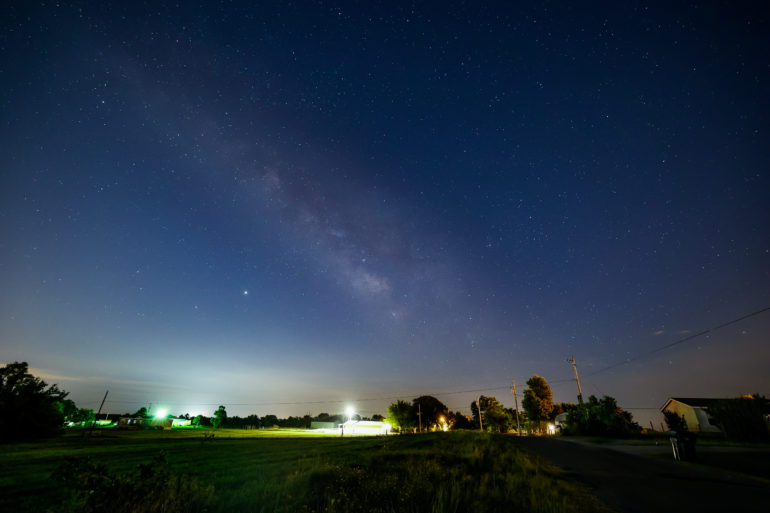
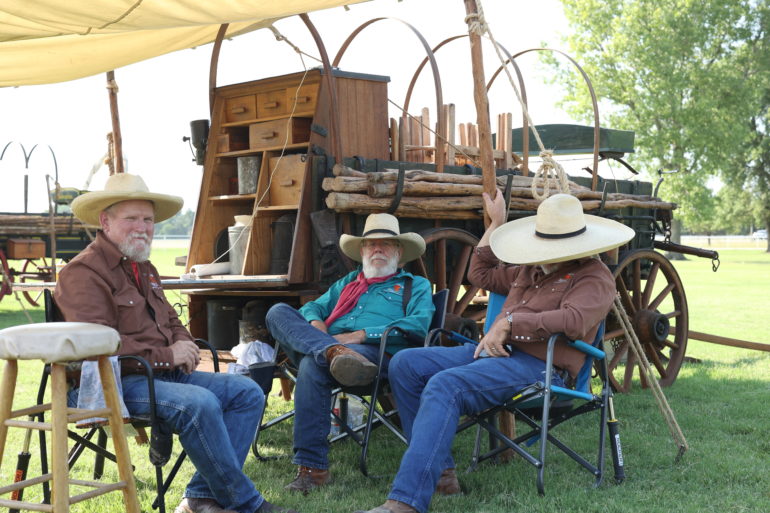
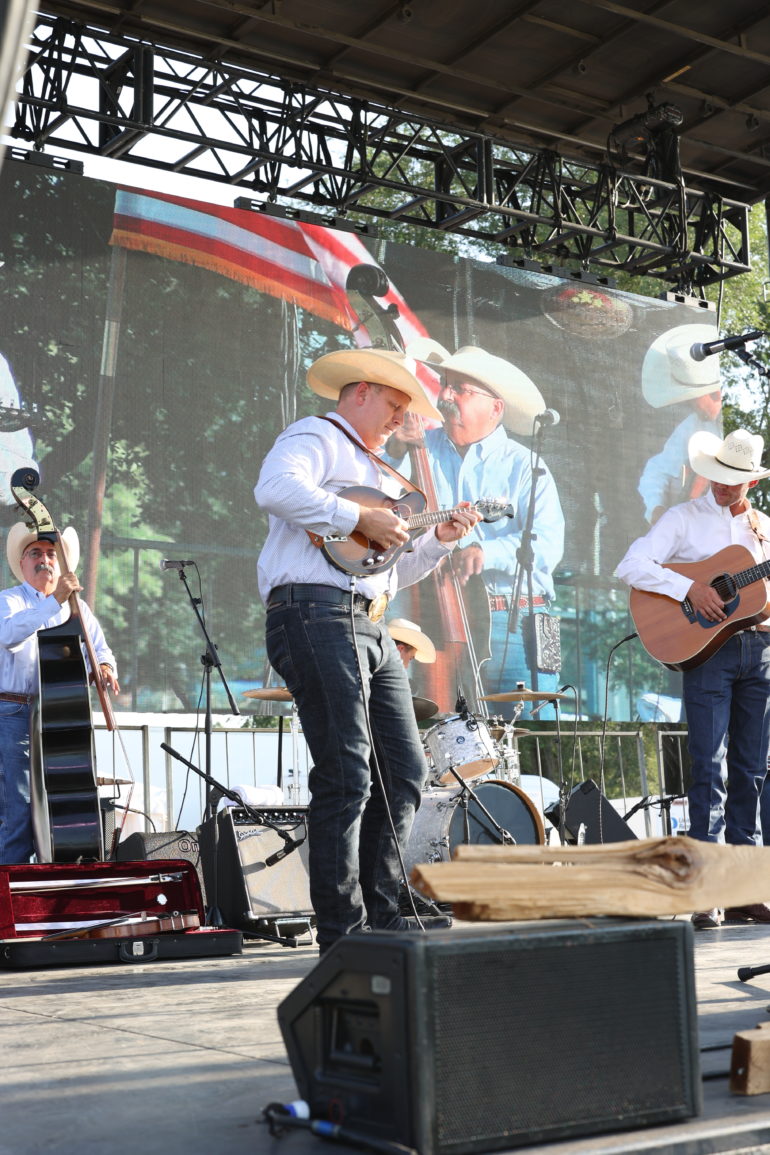
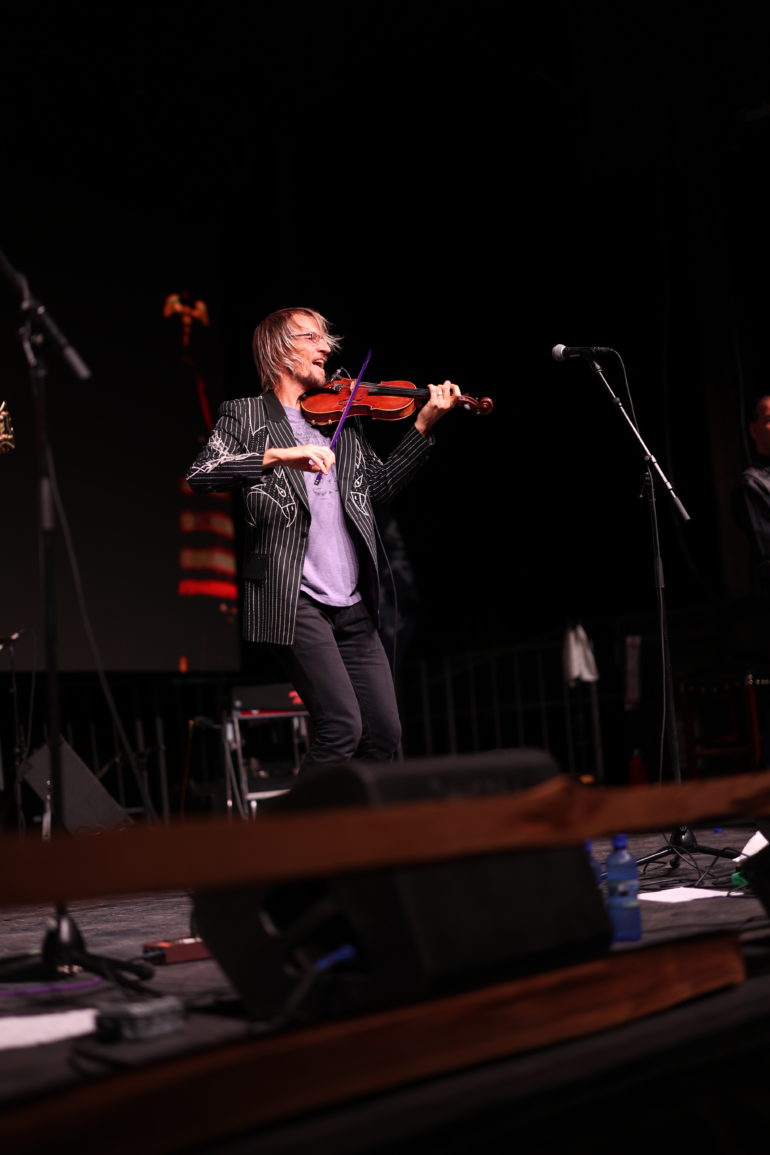





Conclusions
Likes
- Excellent image quality and overall performance
- Wonderful color rendition
- Fantastic build quality, ergonomics, and menu system
- Great IBIS
Dislikes
- The entry price of $2,499
- No top LCD panel


The Canon EOS R6 has proven itself to be a workhorse of a camera. During my time with the R6, I have put it through numerous real-world situations, including sporting events, a portrait session, wildlife and birding photography, and I even took it to one of my professional event shoots. In every instance, the Canon EOS R6 stood up to the task and delivered images my clients and I are delighted with.
Overall, the Canon EOS R6 is an excellent stills camera that will bring a smile to the face of any event, wedding, or portrait photographer. It will do wonders for documentarians and photojournalists who need extreme low light shooting capabilities. The incredible tracking, burst rates, and buffer will delight wildlife and sports photographers. It’s also a capable camera for landscape and astrophotography too. The EOS R6 is Canon’s do it all camera, and it does it all really well.
The Canon EOS R6 receives our Editors Choice Award. These awards are not given out lightly, so when we do award them, know that it has been earned. I wouldn’t hesitate to make the Canon EOS R6 my go-to camera for professional work. The only issue is the price. You’re getting a lot of camera for $2,499, but Canon really needs to price the EOS R6 more competitively. The competition is priced below $2,000, and that’s where the R6 needs to be. Whether you buy one now at the price of $2,499 or wait to see if the price drops, you will not be disappointed with your purchase. This is a serious camera that’s built to last, and it will serve any photographer working out in the field well. Want one? Head on over to Amazon to check out the latest price.


